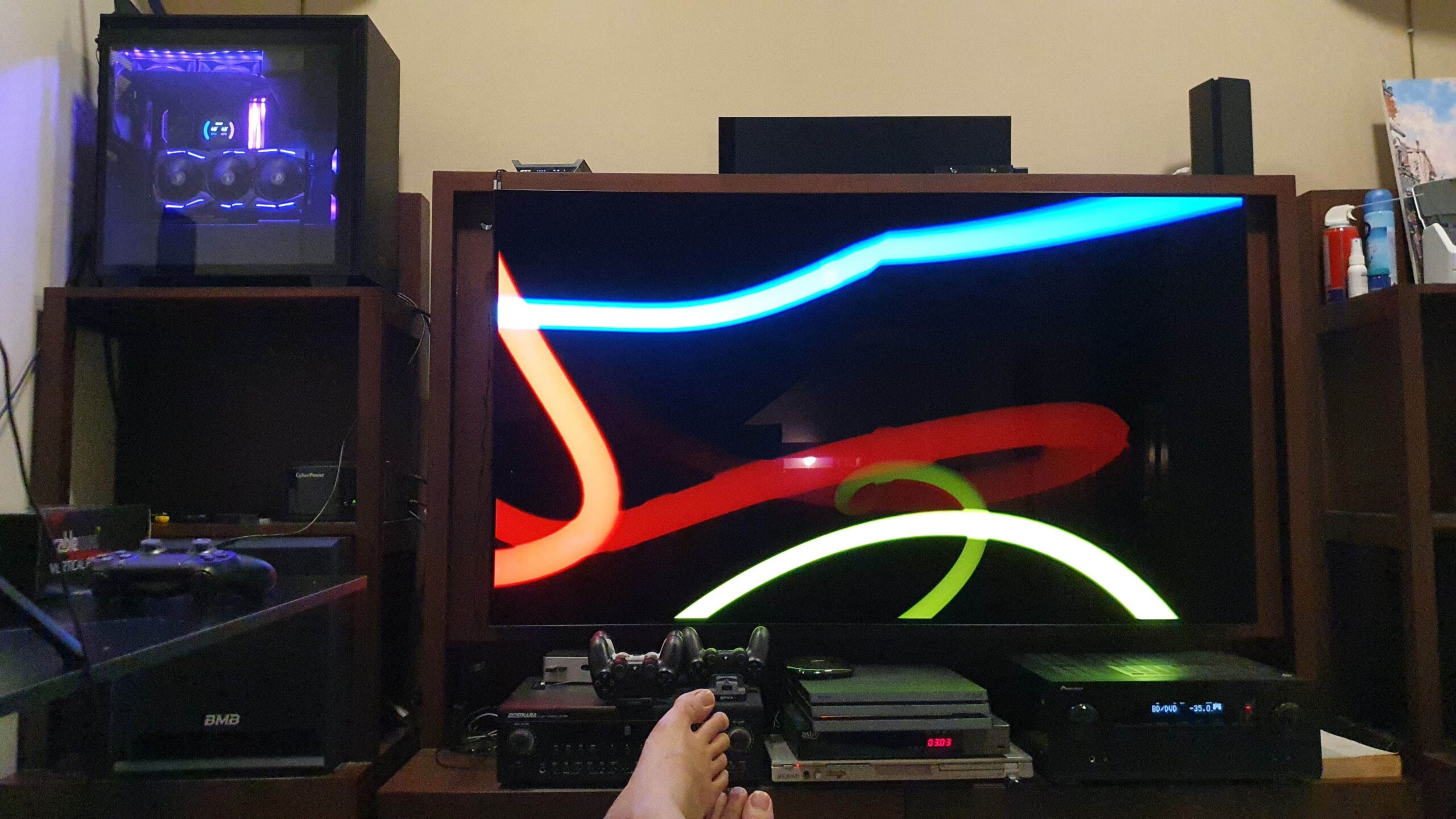It has only been about a month since I got my LG C9 display which I use with my newly built PC (another post on that later). People talk a lot about how this OLED+PC combination is bad because there is higher chance of burn-in, so here are the current measures I’ve tried to alleviate this.
Auto-Hide the Taskbar (Windows 10)
This is a standard option in Windows 10, and to access it right click on your taskbar and choose Taskbar settings.

It’s not perfect though, as the taskbar will sometimes still peek out of the bottom (as can be seen above), so that’s why I’ve chosen to use
Firefox as my main browser
Firefox’s full-screen mode also suppresses the taskbar (you’d need to press the Win key to reveal it) and mousing over the top edge of the screen reveals the tab list. Chrome doesn’t do this and it annoys me. It does Ctrl-Tab better too.
Alternative:
Get the Buttery Taskbar, system-wide taskbar suppression but a bit outdated and it was a bit wonky for me (sometimes the taskbar wouldn’t appear at all, possibly a conflict with other programs like Firefox.)
Also check out:
Dark Reader, forced dark-mode on websites. Available for all major browsers.
1-minute Ribbon screensaver
I use very aggressive settings for the screensaver, because why not. It hasn’t been a bother at all. If you’re watching a presentation or a video it wouldn’t trigger anyway.
EDIT: It’s 3 mins now. 1 was just getting in the way a lot. 😅

Black desktop background
OLEDs work by individually lighting up every single pixel, and with each light up the individual Red, Green, and Blue “sub pixel lights” will decay individually and thus causing burn-in on the long run. Keeping things dark and black should increase the lifespan of our OLED displays.
To access this setting, right click on your Desktop and choose Personalize.

Dark mode everywhere
Enable dark mode in all apps and websites that support it. It can be a dark theme or something similar. I’d do this even on PCs with normal displays, as personally it does help with eye strain. We start by turning on a dark theme in Windows 10, then work our way down to individual apps.




Hide the scroll bar
This nifty Firefox addon to hide the main scrollbar on most pages.
AutoHotkey scripts
If you’re familiar with this software, here are some scripts I use(d) related to this topic.
Manually trigger screen saver
Sometimes when I’m not sure if an app will keep my system awake when I need to AFK for a bit, this script helps.
; Screensaver ^!L:: ; Ctrl+Alt+L Run, C:\Windows\System32\Ribbons.scr /s return
Full-screen mode when scrolling down in Google Chrome & Firefox
Before I switched to Firefox I was always in constant fear of the burn-in from the Chrome tab strip, so I used this to just automatically go full-screen mode as I am scrolling down, i.e. reading, the page.
GroupAdd, Browsers , ahk_class Chrome_WidgetWin_1
GroupAdd, Browsers , ahk_class MozillaWindowClass
fullscreen() {
WinGetPos,,, w, h, A
return (w = A_ScreenWidth && h = A_ScreenHeight)
}
#IfWinActive ahk_group Browsers
WheelDown::
Send, {WheelDown}
if (!fullscreen()) {
Send, {F11}
}
return
Other nifty tools
Sound Keeper
Your expensive display is most likely connected to an expensive receiver (mine is not at that level, since I recently discovered it doesn’t support eARC), and this tool will help you keep it awake instead of the usual starting audio delay when you start to play something. Also stops the receiver from going into standby.
I use the digital zeroes option instead of the default inaudible audio option, since that seems to make more sense to me for HDMI.

Leave a Reply